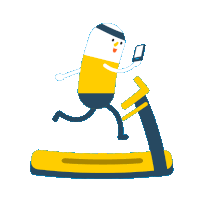

Welcome to our article on effective machine high row exercises for a strong upper body. In this comprehensive guide, we will explore the benefits of the machine high row, the muscles targeted, proper form, alternative exercises, and its importance in strength training. Whether you are a beginner or an experienced fitness enthusiast, incorporating the machine high row into your routine can greatly enhance your upper body strength and muscle development.
The machine high row exercises offer several benefits for a strong upper body. One of the advantages of these exercises is the variety of variations available. Some common variations include barbell rows, bench rows, dumbbell rows, elevated rows, and cable rows. These variations allow for different grips and angles, targeting various muscles in the upper body.
Incorporating machine high row exercises into a full body workout can provide a comprehensive strength training routine. By engaging multiple muscle groups, such as the latissimus dorsi, trapezius, rhomboids, biceps, and forearms, the machine high row exercises offer a compound movement with a full range of motion. This not only helps in building arm muscles and improving grip strength but also develops the upper back muscles and improves posture.
Furthermore, the machine high row exercises activate all 20 pairs of upper back muscles, making it a valuable exercise for overall upper body strength and muscle development. By incorporating these exercises into a full body workout, individuals can target multiple muscle groups simultaneously, leading to efficient and effective strength gains.
Machine high row exercises target specific muscles in the upper body, providing a comprehensive workout for a strong and well-developed physique. When performing machine high row exercises, it is important to understand the muscles that are being targeted to ensure proper form and maximize muscle gains. The key muscles targeted by machine high row exercises include:
To maximize muscle gains in machine high row workouts, it is important to avoid common mistakes and follow best practices. Some common mistakes to avoid include:
To diversify your upper body workout routine, consider incorporating alternative exercises that target similar muscle groups as the machine high row. One effective alternative is using resistance bands for back exercises. Resistance bands provide constant tension throughout the movement, engaging the back muscles and promoting muscle growth. They are versatile and portable, allowing you to perform a wide range of exercises anywhere.
Common mistakes to avoid during machine high row exercises include using excessive weight that compromises proper technique and relying on momentum instead of controlled movements. It is important to maintain proper form and avoid rounding the shoulders or hunching the back. Additionally, don't neglect proper warm-up and stretching before performing the exercise to prevent injury.
Some alternative exercises to machine high row include bent-over rows, single-arm rows, and chest-supported rows. These exercises target the same muscle groups as the machine high row and can be performed with dumbbells or barbells. Additionally, cable high rows and kneeling high cable rows are effective alternatives that allow for a full range of motion and target the back muscles.
Incorporating these alternative exercises into your workout routine can help prevent boredom, challenge your muscles in different ways, and promote overall upper body strength and development.
Executing the machine high row exercise with proper form and technique is essential for maximizing its benefits and ensuring a strong upper body. To help you perform this exercise correctly and avoid common mistakes, here are some tips and variations:
Continuing the discussion on the machine high row exercise, its importance in upper body strength training lies in its ability to effectively target and strengthen key muscles involved in back and arm movements. One of the main benefits of the machine high row is its ability to provide progressive overload, which is crucial for muscle growth and strength development. By gradually increasing the weight or resistance used in the exercise, individuals can continually challenge their muscles and stimulate further adaptation.
To maximize muscle activation in machine high row exercises, proper technique and form are essential. It is important to retract the scapula before pulling to engage the back muscles effectively. Additionally, driving the elbows down and back, and focusing on the movement rather than simply pulling the handles to the chest, can help target the intended muscles more efficiently.
Incorporating the machine high row into a comprehensive upper body strength training routine can provide a full-body workout by activating multiple muscle groups simultaneously. The exercise is comparable to compound movements like squats, deadlifts, and bench presses in terms of its ability to engage numerous muscles and promote overall strength and muscle development. By following proper form, utilizing progressive overload, and incorporating techniques to maximize muscle activation, individuals can effectively utilize the machine high row to enhance their upper body strength training.
In conclusion, incorporating machine high row exercises into your upper body strength training routine can greatly benefit your overall strength and muscle development. By targeting the back muscles and biceps, this compound pulling exercise provides a unique stimulus and can handle heavy loads. If the high row machine is unavailable, alternative exercises can be performed to achieve similar benefits. Remember to maintain proper form and technique to maximize the effectiveness of this exercise.
.png)